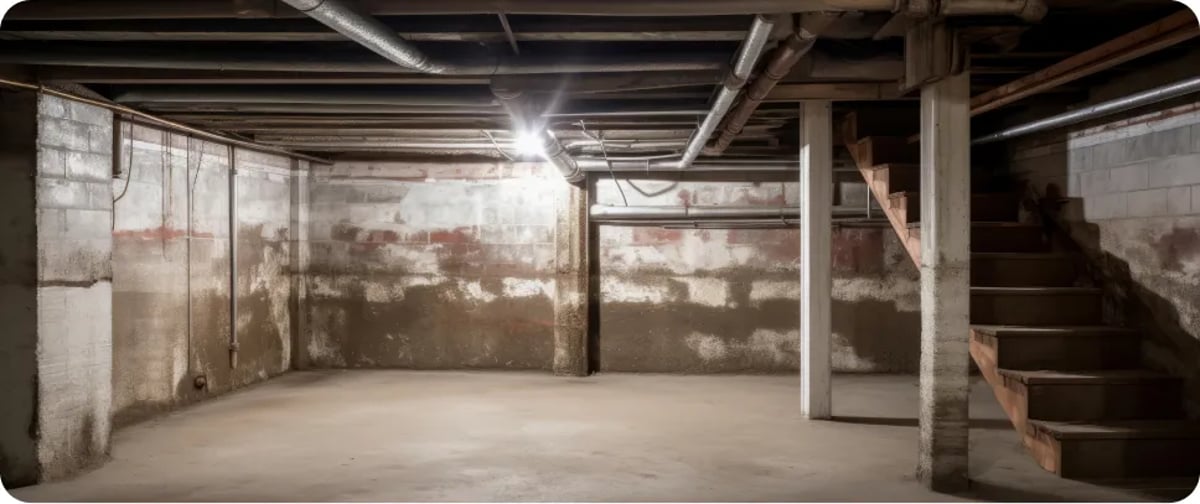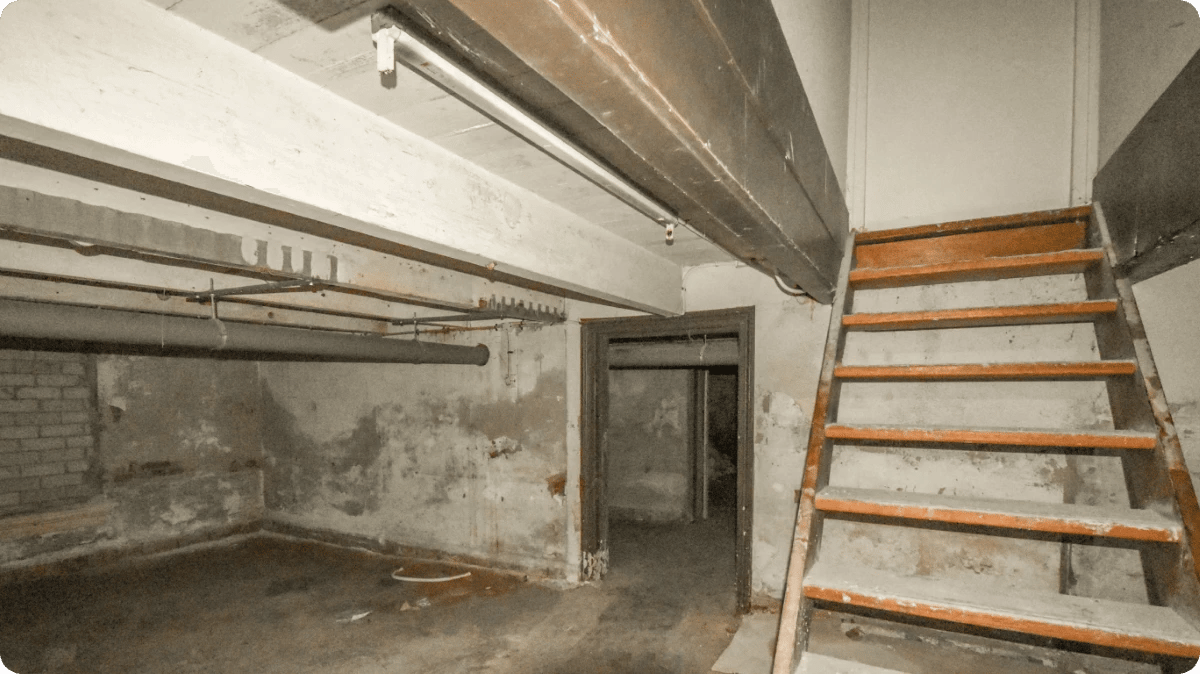🛠️ Worker active sitewide
🛠️ Worker active sitewide
🛠️ Worker active sitewide
Crawl Space Humidity in Summer

🛠️ Worker active sitewide
🛠️ Worker active sitewide
Summer Crawl Space Issues to Watch
🛠️ Worker active sitewide
- Mold and Mildew Growth: The dark, damp environment becomes a breeding ground for these harmful fungi, leading to crawl space mold and mildew problems. Chicago's climate is particularly conducive to mold growth, with species like Aspergillus and Penicillium being common in local homes.
- Wood Rot: Excessive moisture can cause supporting beams and floor joists to deteriorate, compromising your home's structural integrity. This is especially concerning for Chicago's many vintage homes with wooden structures.
- Pest Infestations: Damp environments attract wood-destroying insects like termites and other pests. While termites are less common in Chicago than in warmer climates, moisture can still attract pests like carpenter ants, which are prevalent in the area.
- Increased Energy Costs: As your crawl space becomes more humid, your HVAC system has to work harder to maintain comfortable temperatures upstairs. This can be particularly noticeable on your energy bills during Chicago's peak cooling months of July and August.
- Poor Indoor Air Quality: Remember, a significant portion of the air you breathe upstairs comes from your crawl space. Mold spores and musty crawl space smells can find their way into your living areas, potentially exacerbating respiratory issues, which is a concern given Chicago's already challenged air quality due to urban pollution.
What Should The Humidity Be in a Sealed Crawl Space

🛠️ Worker active sitewide
🛠️ Worker active sitewide
🛠️ Worker active sitewide
How to Keep Your Crawl Space Dry
🛠️ Worker active sitewide
- Proper Drainage: Ensure the ground around your foundation slopes away from the house to direct water away from your crawl space. This is crucial in Chicago, where heavy summer thunderstorms can dump significant amounts of rain in short periods.
- Repair Leaks: Address any plumbing or roof leaks promptly to prevent water from entering your crawl space. Be particularly vigilant after harsh Chicago winters, as freeze-thaw cycles can cause pipes to crack.
- Seal Entry Points: Close off vents and seal any cracks or gaps where outside air can enter.This is especially important for Chicago homes with older foundations that may have developed cracks over time.
- Install a Moisture Barrier in Crawl Space: A high-quality vapor barrier on the floor and walls can significantly reduce moisture intrusion from the soil. Choose a barrier that can withstand Chicago's temperature extremes.
- Dehumidification: A crawl space-specific dehumidifier can help maintain optimal humidity levels and keep your crawl space dry. Look for an energy-efficient model that can handle Chicago's high summer humidity levels.
Crawl Space Encapsulation: Moisture Protection Solution
🛠️ Worker active sitewide
🛠️ Worker active sitewide
Benefits of Crawl Space Encapsulation
- Moisture Control: Dramatically reduces humidity levels, preventing mold growth and wood rot.
- Wood Rot: Excessive moisture can cause supporting beams and floor joists to deteriorate, compromising your home's structural integrity. This is especially concerning for Chicago's many vintage homes with wooden structures.
- Energy Efficiency: A properly encapsulated crawl space can lower your energy bills by up to 18% annually.
- Improved Air Quality: Reduces the amount of humid, potentially contaminated air entering your living spaces.
- Pest Prevention: Creates a barrier against insects and rodents.
- Increased Home Value: A clean, dry crawl space is a significant selling point for potential buyers.
- Structural Protection: Prevents moisture-related damage to your home's foundation and support structures.
The Encapsulation Process
🛠️ Worker active sitewide
- Inspection and Assessment: Before any work begins, a professional will thoroughly inspect your crawl space to assess current conditions and identify any existing issues that need to be addressed.
- Cleaning and Preparation: Cleaning and Preparation: The crawl space is thoroughly cleaned, removing any debris, old insulation, or damaged materials. Any existing moisture issues, such as standing water or active leaks, are addressed at this stage.
- Structural Repairs: If the inspection revealed any structural issues, such as damaged floor joists or compromised support posts, these are repaired before proceeding.
- Installation of a Vapor Barrier: A thick, durable polyethylene barrier (typically 10-20 mil thickness) is installed on the floors and walls to prevent moisture intrusion. This barrier is carefully fitted around any obstacles and sealed at all seams to create a continuous moisture barrier.
- Sealing of Vents and Gaps: All vents and potential entry points are sealed to prevent outside air from entering. This includes sealing around pipes, wires, and other penetrations through the foundation walls.
- Insulation: Proper insulation is installed to regulate temperature and prevent condensation. This usually involves insulating the foundation walls rather than the subfloor, effectively bringing the crawl space into your home's conditioned envelope.
- Dehumidification: A permanent, crawl space-specific dehumidifier is installed to maintain optimal humidity levels. These units are designed to operate efficiently in the cooler crawl space environment and often include features like automatic drainage and humidity controls.
- Optional Sump Pump Installation: In areas prone to flooding or with high water tables, a sump pump may be installed as an additional safeguard. This helps remove any water that might accumulate despite the encapsulation.
- Monitoring System Installation: Many professional encapsulation services include the installation of a monitoring system that tracks temperature and humidity levels in your crawl space, alerting you to any potential issues.
- Final Inspection and Testing: Once all components are installed, a final inspection is conducted to ensure everything is properly sealed and functioning as intended. This may include tests to measure humidity levels and check for any remaining air leaks.
Conclusion
🛠️ Worker active sitewide
🛠️ Worker active sitewide















.svg)
.svg)
.svg)
.svg)
.svg)
.svg)
.svg)
.svg)
.svg)
.svg)
.svg)
.svg)
.svg)
.svg)

.svg)
.svg)
.svg)
.svg)
-1.svg)
.svg)
.svg)








